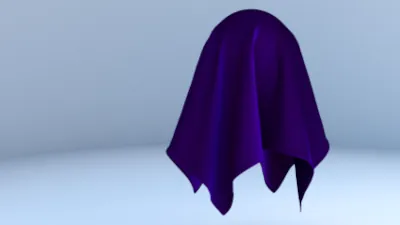Introduction to Maya - Modeling Fundamentals Vol 1
This course will look at the fundamentals of modeling in Maya with an emphasis on creating good topology. We'll look at what makes a good model in Maya and why objects are modeled in the way they are.
#
1
15-08-2011
, 09:54 PM
Registered User
Join Date: Sep 2008
Join Date: Sep 2008
Posts: 2
Edit object after transformation
I've created a light bulb in Maya. I used the vertical grid lines to create it symetric. Each part of the light bulb is a freestanding object (glass, wire, screw etc). Because I wanted it to lie down on the floor, I made a group of it and rotated the group in three directions. Now I want to modify one single element (the wire) of the light bulb and I would use the vertical grid lines for simple editing... I don't want to detransform the whole light bulb into straight vertical position; I want to preserve the data from the transformation. Is it possible to isolate the upper section of the light bulb, set it into my 'start position', then edit the element (aligned on grid lines) and afterwards put it back where it belongs? Or is there another solution/workaround for my question? Thanks!
Jan (Holland)
#
2
16-08-2011
, 02:33 AM

I'm a Chinese and i don't have confidence a bit at my english..But I have try to understand your means for reading 3 times><,If only i could help you

Now you have rotated the group in 3 directions right? Maybe you can fix every parts's position first. That is:
1)Select your bulb group;
2)Click Modify>Freeze Transformations,then you could find every parts of your bulb's parameter becomes zero.
3)Then rotate or move your wire to the center of the vertical grid or the other position where you can edit it by your hand, after that set point of zero to wire's parameter.
Well..as i know,there's no method to fix object's position twice at a one time directly(or maybe you can make a reference object before your rotation), and i think you are able to put the wire at the position you want, there's nobody will discover it's not a absolute symmetry wire.Is this helpful? Anyhow, wish you luck:-) ---everymin
I love the beautiful world

#
3
16-08-2011
, 04:29 PM
1. select the group node
2. center the pivot or place it where I want for the part
3. freeze transforms of the group node in the modeling pose
4. select all the transforms and set a key frame at frame 1 (modeling position)
5. now move to frame 2 and position the group anyway you like and set another keyframe with the object posed (render position)
Now you can switch between the modeling and the render pose by selecting animation frame 1 or 2
--Rick
NOTE: Do not freeze transforms in the render position or part placement location (if it is part of an assembly) until you are done modeling otherwise you lose the modeling pose and will have to re-translate the item in order to model with symmetry. While modeling the parts render pose and/or assembly location and orientation pose is maintained in key frame #2.
You can extend this method to have 3 base key frames: 1=modeling, 2= object assembly and orientation pose , 3= render shot pose
"If I have seen further it is by standing on the shoulders of giants." Sir Isaac Newton, 1675
Last edited by ctbram; 16-08-2011 at 04:43 PM.
#
4
19-08-2011
, 06:23 PM
Registered User
Join Date: Sep 2008
Join Date: Sep 2008
Posts: 2
Posting Rules Forum Rules
Similar Threads
trouble opening maya scene
by jooleyinboots in forum Maya Technical Issues replies 3 on 07-10-2022
Convert Camera Translation to Object rotation?
by jimvfx in forum Animation replies 0 on 28-01-2015
Normal Map definitions
by djwaterman in forum Lighting & Rendering replies 2 on 25-05-2012
Rotate and object, zero (freeze) its transformation, but keep rotation axis-possible?
by gubar in forum Maya Basics & Newbie Lounge replies 2 on 15-03-2008
Snapping Edit Points of a Curve to a Live object
by geezbtw in forum Maya Basics & Newbie Lounge replies 11 on 06-09-2004
Topics
Free Courses
Full Courses
VFX News
How computer animation was used 30 years ago to make a Roger Rabbit short
On 2022-07-18 14:30:13
Sneak peek at Houdini 19.5
On 2022-07-18 14:17:59
VFX Breakdown The Man Who Fell To Earth
On 2022-07-15 13:14:36
Resident Evil - Teaser Trailer
On 2022-05-13 13:52:25
New cloud modeling nodes for Bifrost
On 2022-05-02 20:24:13
MPC Showreel 2022
On 2022-04-13 16:02:13








